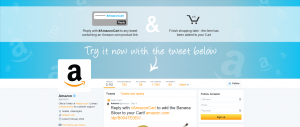 According to research by Socialbakers, a Facebook user liked 4.5 pages on average in 2009. Four years later, that number has jumped to 40 pages per user in 2013, and in some countries it’s even higher. For example, an average Facebook user in the U.S. likes 70 pages, and Facebook users from the U.K. or France like 48 pages. In Mexico and Turkey, Facebook users like an average of 41 and 40 pages, respectively.
According to research by Socialbakers, a Facebook user liked 4.5 pages on average in 2009. Four years later, that number has jumped to 40 pages per user in 2013, and in some countries it’s even higher. For example, an average Facebook user in the U.S. likes 70 pages, and Facebook users from the U.K. or France like 48 pages. In Mexico and Turkey, Facebook users like an average of 41 and 40 pages, respectively.
In other words, across the globe, Facebook users like a lot of pages, and those pages create a lot of clutter for their audiences. Socialbakers reports that in 2009, brands published an average of five posts per month, but in 2013, that number is more than seven times higher. Today, brands publish 36 posts per month on average.
How do all of those posts on brand Facebook pages affect Facebook users? Based on the data from Socialbakers, the flood of posts is bigger than you might think with the average Facebook user, who saw 22.5 updates per month in 2009, now inundated with 1,440 updates per month.
Of course, all of these brand Facebook page updates are just a small part of the daily posts Facebook users are actually exposed to. When you add posts from friends, family, and so on, the number is even higher. As a result, brands have a lot of competition to capture consumer attention and to turn that attention into engagement.
When you take a look at those numbers, it’s clear that simply publishing more posts on your brand Facebook page won’t deliver stellar results. Adding more clutter to your audience’s Facebook experience won’t make them like you more. In fact, it will probably make them dislike you more. Instead of multiplying the clutter, break through the clutter with better messages that are specifically targeted to your audience. Use images and videos that stand out in the revamped Facebook news feed, and offer something of value in your updates.
Facebook is no longer the place for brands to publish useless updates. Staying on consumers’ radar screens requires more than meaningless updates that don’t deliver value to your audience. Rethink your Facebook publishing strategy and make sure you’re not adding to the clutter. If an update could be perceived as clutter, don’t click the Publish button.
You don’t want to gain a reputation as the “annoying brand.” Instead, you want to gain a reputation as the brand that piques your audience’s interest each time they see your name in their Facebook news feed.
Image: Miki Yoshihito
Susan Gunelius is the author of 10 marketing, social media, branding, copywriting, and technology books, and she is President & CEO of KeySplash Creative, Inc., a marketing communications company. She also owns Women on Business, an award-wining blog for business women. She is a featured columnist for Entrepreneur.com and Forbes.com, and her marketing-related articles have appeared on websites such as MSNBC.com, BusinessWeek.com, TodayShow.com, and more.
She has over 20 years of experience in the marketing field having spent the first decade of her career directing marketing programs for some of the largest companies in the world, including divisions of AT&T and HSBC. Today, her clients include large and small companies around the world and household brands like Citigroup, Cox Communications, Intuit, and more. Susan is frequently interviewed about marketing and branding by television, radio, print, and online media organizations, and she speaks about these topics at events around the world. You can connect with her on Twitter, Facebook, LinkedIn, or Google+.


